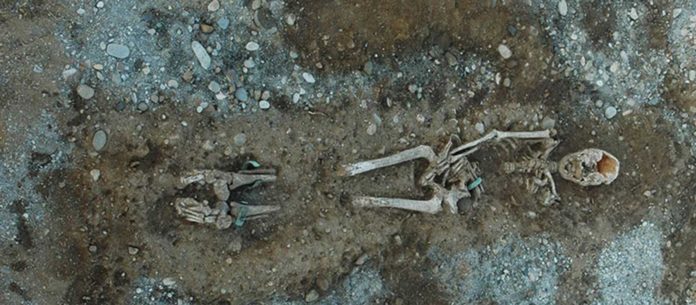How did Swiss people respond to changes in their diet during the Bronze Age?
A new study by scientists from the University of Geneva (UNIGE), Switzerland, and Pompeu Fabra University (UPF) in Spain aims to reconstruct their diet evolution. They analyzed the skeletons of several Bronze Age communities that lived in Western Switzerland.
Scientists discovered that manure use had become widespread over time to improve crop harvests in response to demographic growth. They also found that there had been a radical change in dietary habits following the introduction of new cereals, such as millet.
The Neolithic Age marked the inception of animal husbandry and the cultivation of wheat and barley. But what about the diet in the next Bronze Age? Archaeobotany and archaeozoology have been routinely used to reconstruct the diet, environment, agricultural practices, and animal husbandry in the Bronze Age, but these methods only provide general information.
Alessandra Varalli, a researcher in UPF’s Department of Human Sciences and the study’s first author, said, “For the first time, we decided to answer this question precisely by analyzing animal skeletons directly. This meant we could study the stable isotopes from the collagen of the bones and teeth that constitute them and define their living conditions.”
Marie Besse, a professor in the Laboratory of Prehistoric Archaeology and Anthropology in the F.-A. Forel Department at UNIGE said, “In fact, we are what we eat. Biochemical analyses of bones and teeth will tell us what types of resources have been consumed.”
“Forty-one human skeletons, 22 animal skeletons and 30 plant samples from sites in Western Switzerland and Haute-Savoie (France) were studied, ranging from the beginning to the end of the Bronze Age.”
Dr. Varalli said, “The study’s first outcome showed that there was no difference between the diets of men and women, and that there were no drastic changes in diet between childhood and the adult phase of these individuals. So, there was no specific strategy for feeding children, just as men didn’t eat more meat or dairy product than women. What’s more, when it comes to the origin of the proteins consumed, it was found that although Western Switzerland is home to a lake and rivers, the diet was mainly based on terrestrial animals and plants to the exclusion of fish or other freshwater resources.”
“During the early Bronze Age (2200 to 1500 BC), agriculture was mainly based on barley and wheat, two cereals of Near Eastern origin that were grown from the Neolithic Age in Europe. But from the late Late Bronze Age (1300 to 800 BC), we note that millet was introduced, a plant from Asia that grows in a more arid environment. In addition, nitrogen isotopes revealed that manuring was used more intensively.”
“The analysis of several plant species from different phases of the Bronze Age suggests that there was an increase in soil fertilization. This was most likely to boost the production of agricultural crops.”
Combining these two discoveries confirmed the general aridity in Europe during this period, which meant agriculture had to be adapted. There was heightened trade between different cultures, such as Northern Italy or the Danube region, leading to millet’s introduction into Western Switzerland.
These new cereals may have assumed a significant part in the security of supply and may increase the populace increase observed in the Late Bronze Age. These cereals grow more quickly and are more resistant to drought when the environment was generally warm and dry. Finally, the utilization of fertilizer went hand-in-hand with a general improvement in techniques, both agricultural and artisanal.
Professor Besse said, “This first study on changes in Switzerland’s diet changes during the Bronze Age corroborates what we know about the period. But it also demonstrates the richness of the widespread intercultural exchanges. We still have much to learn about this millennium, in spite of the scientific problems related to the paucity of available material.”
“This is one of the reasons that led me to excavate the Eremita cave with UNIGE students. Located in the Piedmont region of Italy, it is dated to the Middle Bronze Age around 1600 BC.”
Journal Reference:
- Alessandra Varalli et al. Bronze Age innovations and impact on human diet: A multi-isotopic and multi-proxy study of western Switzerland. DOI: 10.1371/journal.pone.0245726
